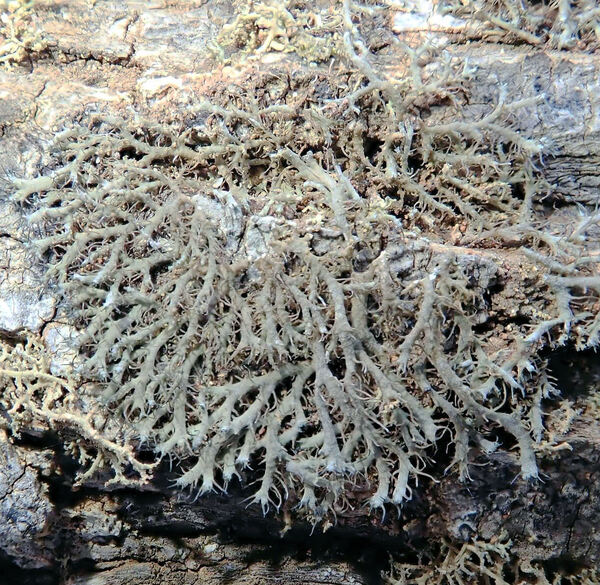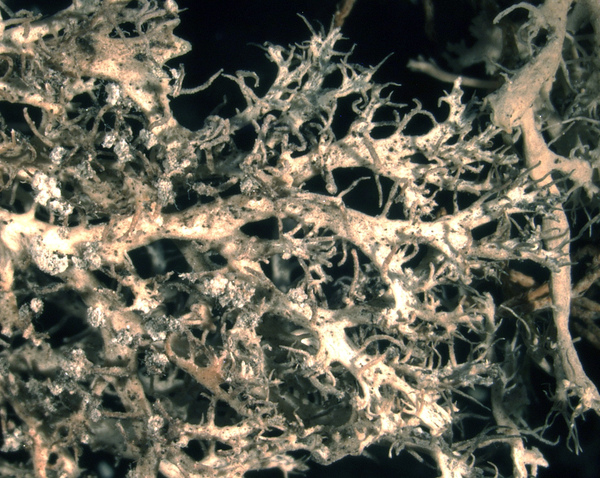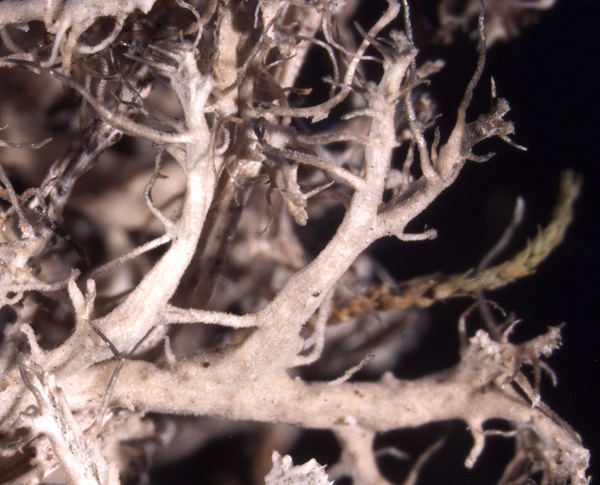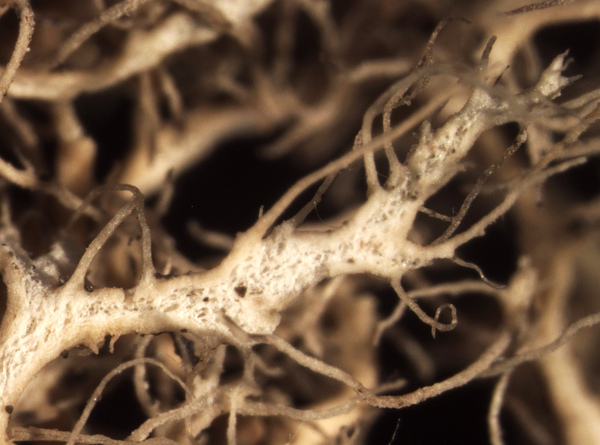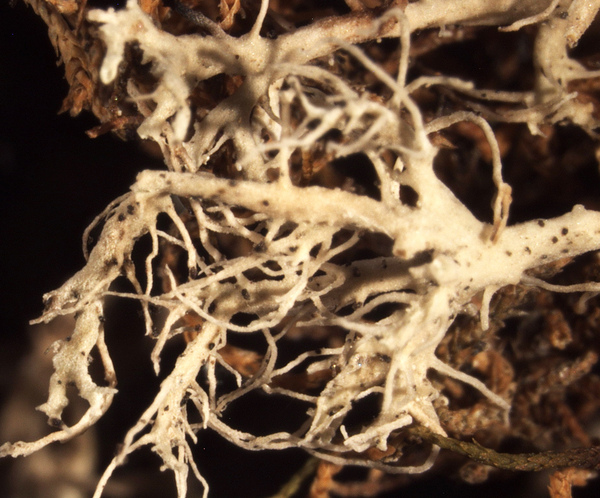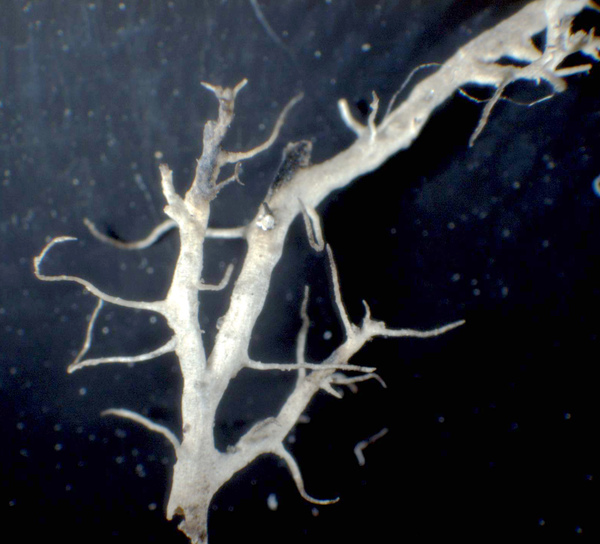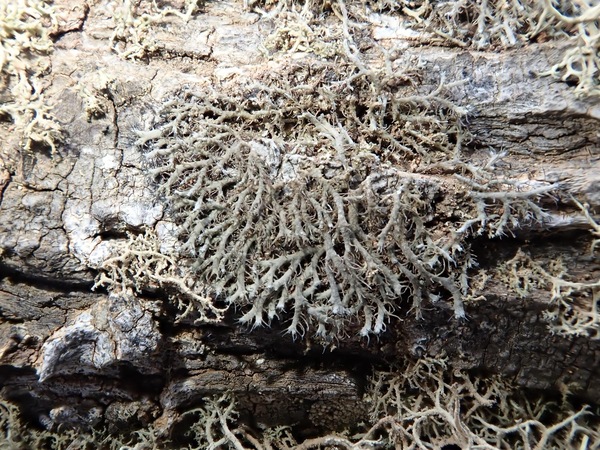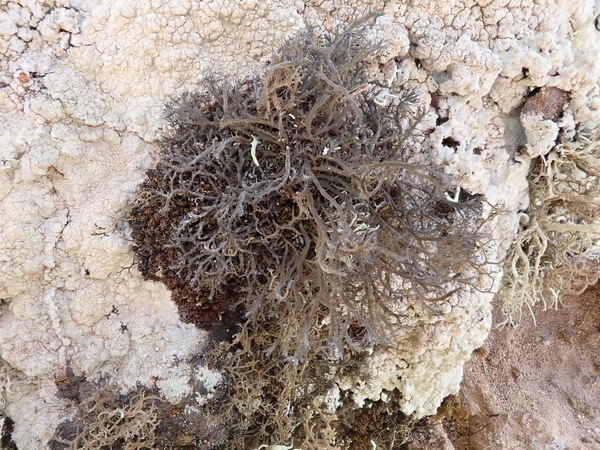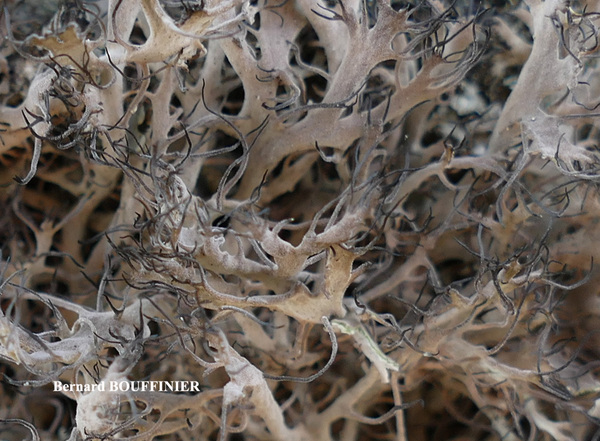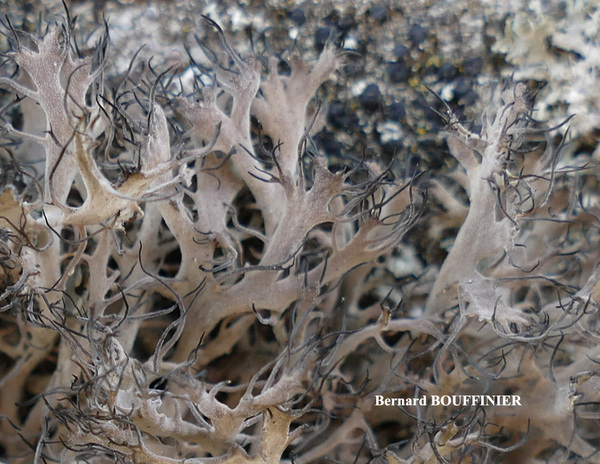Anaptychia crinalis (Schaer.) J. Nowak
Vezda ex J. Nowak in Kochman & al., Flora Polska, Porosty, VI, 3: 128, 1993. Basionym: Borrera crinalis Schleich. ex Schaer. - Lich. Helv. Spicil.: 488, 1840.
Synonyms: Anaptychia ciliaris f. angusta A. Massal.?; Anaptychia ciliaris var. crinalis (Schaer.) Rabenh.; Physcia ciliaris var. crinalis Schleich. nom.nud.
Distribution: N - Frl, Ven (Lazzarin 1997, 2000, Caniglia & al. 1999, Nascimbene 2011, Brackel 2013), TAA (Lich. Graec. 222: Obermayer 2003, Nascimbene & al. 2005, 2006, 2022, Esslinger 2007, Nimis & al. 2015), Lomb, Piem, Emil (Fariselli & al. 2020). C - Abr (Sabatini & al. 2016), Mol (Nimis & Tretiach 1999, Caporale & al. 2008), Sar. S - Camp (Aprile & al. 2003b), Bas.
Description: Thallus subfoliose to subfruticose, grey to grey-brown, loosely attached. Lobes flattened, 0.1-0.5(-0.8) mm broad, narrower in apical parts, several cm long, linear, with prominent marginal cilia. Lower surface whitish, channelled. Upper cortex prosoplectenchymatous, of conglutinated, thick-walled, periclinally arranged hyphae, overlain by a transparent layer of similar hyphae; lower cortex absent. Apothecia rare, round, lecanorine, strongly constricted to substipitate, to 5 mm diam, with a black, often faintly pruinose disc and a grey to grey brown, usually spinulose thalline margin. Epithecium brown; hymenium and hypothecium colourless; paraphyses branched in upper part, the apical cells more or less swollen. Asci 8-spored, clavate, the K/I+ blue tholus penetrated by a faintly amyloid apical cushion with parallel or diverging flanks, the wall K/I-, surrounded by a K/I+ blue outer layer, Lecanora-type. Ascospores 1-septate, brown, ellipsoid, slightly constricted at septa, thin-walled (Physconia-type) and ornamented, 30-46 x 12-22 µm. Pycnidia dark, semi-immersed. Conidia short-bacilliform, 3.5–5 x c. 1 µm. Photobiont chlorococcoid. Spot tests: all negative. Chemistry: without lichen substances.Note: confined to beech forests in rather open but humid situations. Perhaps just a morphotype of A. ciliaris (intermediate morphs are common): a molecular study could solve the problem. It is included in the Italian red list of epiphytic lichens as “Vulnerable” (Nascimbene & al. 2013c).
Growth form: Fruticose
Substrata: bark
Photobiont: green algae other than Trentepohlia
Reproductive strategy: mainly sexual
Most common in areas with a humid-warm climate (e.g. most of Tyrrenian Italy)
Commonnes-rarity: (info)
Alpine belt: absent
Subalpine belt: absent
Oromediterranean belt: absent
Montane belt: extremely rare
Submediterranean belt: absent
Padanian area: absent
Humid submediterranean belt: absent
Humid mediterranean belt: absent
Dry mediterranean belt: absent

Predictive model
Herbarium samples
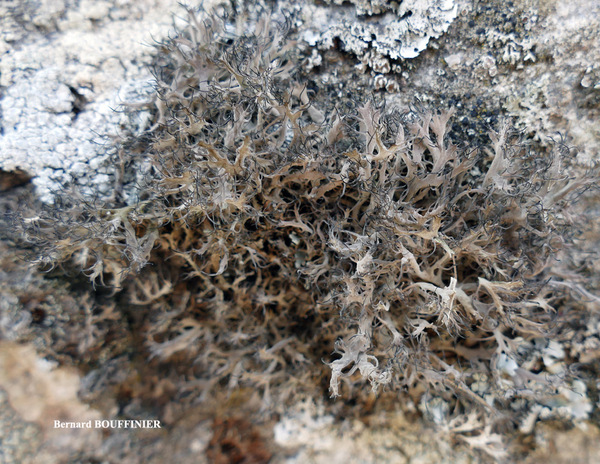
Bernard Bouffinier - Source: http://www.lichensmaritimes.org/index.php?task=fiche&lichen=963&lang=en
France, Corse Col de Vergio 1500 m

Bernard Bouffinier - Source: http://www.lichensmaritimes.org/index.php?task=fiche&lichen=963&lang=en
France, Corse Col de Vergio 1500 m
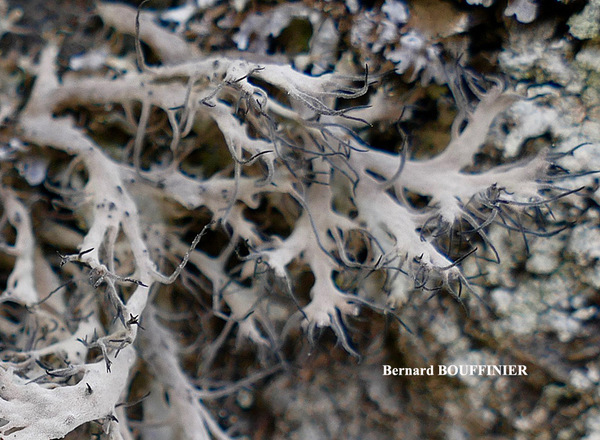
Bernard Bouffinier - Source: http://www.lichensmaritimes.org/index.php?task=fiche&lichen=963&lang=en
France, Corse Col de Vergio 1500 m
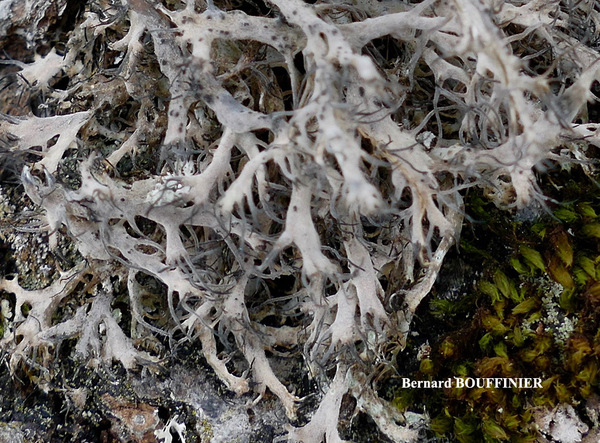
Bernard Bouffinier - Source: http://www.lichensmaritimes.org/index.php?task=fiche&lichen=963&lang=en
France, Corse Col de Vergio 1500 m
Growth form: Fruticose
Substrata: bark
Photobiont: green algae other than Trentepohlia
Reproductive strategy: mainly sexual
Most common in areas with a humid-warm climate (e.g. most of Tyrrenian Italy)
Commonnes-rarity: (info)
Alpine belt: absent
Subalpine belt: absent
Oromediterranean belt: absent
Montane belt: extremely rare
Submediterranean belt: absent
Padanian area: absent
Humid submediterranean belt: absent
Humid mediterranean belt: absent
Dry mediterranean belt: absent

Predictive model
| Herbarium samples |

Bernard Bouffinier - Source: http://www.lichensmaritimes.org/index.php?task=fiche&lichen=963&lang=en
France, Corse Col de Vergio 1500 m

Bernard Bouffinier - Source: http://www.lichensmaritimes.org/index.php?task=fiche&lichen=963&lang=en
France, Corse Col de Vergio 1500 m

Bernard Bouffinier - Source: http://www.lichensmaritimes.org/index.php?task=fiche&lichen=963&lang=en
France, Corse Col de Vergio 1500 m

 Index Fungorum
Index Fungorum
 GBIF
GBIF
